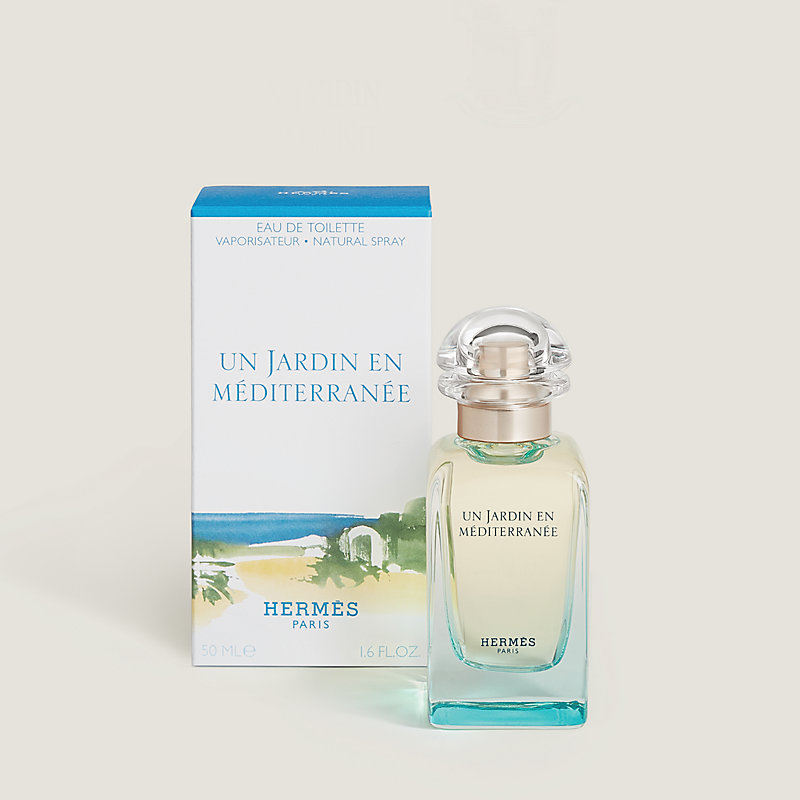There is something about summer that awakens the senses. The heat clings to your skin like silk, the breeze carries whispers of citrus and suncream, and your body hums with a quiet thrill. Whether it is a slow afternoon beneath linen sheets or the electric promise of a moonlit rooftop, summer is the season of seduction.
As F. Scott Fitzgerald once wrote, “And so with the sunshine and the great bursts of leaves growing on the trees… I had that familiar conviction that life was beginning over again with the summer.” The world feels more alive, and so do we. Our wardrobes lighten, our smiles lengthen, and fragrance becomes more than an accessory. It becomes a feeling.
This is the time to wear perfume like a second skin. Fresh mists that sparkle at dawn, golden oils that melt into the collarbone, floral veils that linger long after the sun dips below the horizon. It is not about being noticed. It is about being unforgettable.
In this curated selection, we explore the Top 5 fragrances to wear this summer, each chosen for its power to transform the everyday into something sublime. Prepare to discover a new summer signature or five.
1. YSL Libre L’Eau Nue: The Summer Whisper

There is a moment, just before dusk, when the heat softens and the light turns golden. That is what Libre L’Eau Nue feels like on the skin. A new skin-scent interpretation of YSL’s iconic Libre, this eau de parfum de peau offers an ethereal, almost naked impression of femininity. It is not perfume that enters the room before you do. It is the scent that draws someone closer once they are already there.
Libre L’Eau Nue clings to the skin like silk voile. It opens with the bright sparkle of bergamot, slightly green and citrusy, before melting into a heart of white lavender and orange blossom. There is a dreamy softness to it, a calm sensuality that feels like lying bare under linen sheets with the windows open. The base is musky yet creamy, thanks to soft white musk and a drop of vanilla that lingers like a whispered memory.
It is the perfect fragrance for a lazy summer morning or a slow-burning evening. Think linen dresses, tousled hair, bare shoulders and a sun-kissed glow. Libre L’Eau Nue is not just one of the Top 5 fragrances to wear this summer. It is summer, bottled.
This scent is for the woman who wants to feel effortlessly radiant. It is for those who do not need to shout to be noticed. A delicate revolution in a bottle, it invites intimacy and celebrates the heat of skin rather than masking it. Apply it generously on warm wrists, behind the knees or along the collarbone for a soft trail that becomes more addictive with every hour.
What makes it especially interesting this summer is its unique interpretation of sensuality. While many summer perfumes lean into aquatic or tropical notes, Libre L’Eau Nue dares to stay close to the skin. It is sun-warmed skin and fresh linen, not beach cocktails or exotic escapes. For the woman who wants to smell like herself, only better, this is a seductive must-have.
2. Tom Ford Eau de Soleil Blanc: The Golden Escape
If the sun had a scent, it would wear Tom Ford. Eau de Soleil Blanc is the olfactory equivalent of slipping into a silk kaftan after a dip in crystalline waters. It is luminous, decadent, and undeniably hedonistic. A summer fragrance that does not whisper, it glows. Warm, radiant, and sensual from the very first mist.
Unlike the original Soleil Blanc, this eau de toilette is fresher and airier, yet no less addictive. It opens with a sparkling citrus cocktail: bitter orange, petitgrain, and bergamot. Imagine the zest of sun-drenched fruit sliced by the sea. Then comes a floral heart where the indulgence begins, with jasmine, tuberose, and ylang-ylang unfolding slowly, as if warmed by sun cream and skin. The base is creamy and enveloping, with pistachio, coconut milk, and amber giving it a sun-lotion-meets-luxury feel.
Wearing Eau de Soleil Blanc is like stepping onto the deck of a private yacht. It’s ideal for daytime glamour, a beachside lunch, or simply making the supermarket feel like St. Barts. It’s one of the Top 5 fragrances to wear this summer because it delivers sunshine in spray form, effortlessly transporting you to a golden hour fantasy.
It suits women who want to be seen, but always in style. There is nothing shy about it. The pistachio and coconut accord, lightly salted and sweet, creates a sensual halo that lasts for hours without overwhelming. The transparency of the composition keeps it refreshing, even in the heat. It is glamour without heaviness. Heat with refinement.
What makes Eau de Soleil Blanc stand out this summer is its versatility. While it has the opulence Tom Ford is known for, its lighter concentration and citrusy top notes make it perfect for wear on even the hottest days. Spray it generously over bare shoulders, the backs of the knees, or across the décolleté to activate its full radiance. You won’t need a tan or a beach club reservation. This scent does it all for you.
3. Nuxe Delicious Fragrant Water: The Sun-Kissed Caress

Some scents do not just remind you of summer. They are summer. Nuxe Delicious Fragrant Water captures that fleeting golden glow when your skin is still warm from the sun and your hair smells of salt and wildflowers. It is light, joyful, and utterly addictive. This is the fragrance you reach for when your swimsuit is still damp and your cheeks are flushed from laughter.
Inspired by the cult Nuxe Sun body range, this fragrant water opens with radiant notes of sweet orange and petitgrain. The citrusy burst is clean and juicy, like peeling an orange in the garden with your fingers. The heart reveals exotic tiaré and coconut, softened by a whisper of vanilla and musk that clings delicately to the skin. It smells like a tropical breeze filtered through warm skin and honeyed sand.
Its format, a scented water rather than a classic eau de toilette or parfum, makes it incredibly versatile for summer. You can mist it on your body, hair or clothes. Spray it after a swim, after your aftersun, or to feel instantly uplifted. It is one of the Top 5 fragrances to wear this summer because it was made for sunlit skin and carefree afternoons.
Perfect for beach days, poolside lounging, or early evening apéritifs, it carries you from sunrise to sunset without ever feeling heavy. This is a scent for those who like their perfumes effortless and joyful, a fragrant wink rather than a bold statement. It smells like your skin, only warmer and sweeter.
What makes Nuxe Delicious Fragrant Water so interesting this summer is its perfect balance of freshness and sensuality. It is neither too floral nor too gourmand, just a gentle caress of sun and pleasure. Affordable yet luxurious, this is a scent that proves you do not need to spend a fortune to smell like a Mediterranean escape. You need a little Nuxe.
Spritz it generously. Let it settle. Let it glow. This is the scent of lazy days and secret kisses. A must-have in your summer fragrance wardrobe.
4. Hermès Un Jardin en Méditerranée: The Secret Garden Escape

Un Jardin en Méditerranée is not a perfume. It is a place. Hermès invites you into a sun-drenched garden hidden behind a whitewashed wall where fig trees stretch towards a deep blue sky and the sea breathes just beyond the olive grove. This fragrance is one of the Top 5 fragrances to wear this summer because it is both a memory and a promise, a personal Mediterranean escape in every spray.
Created by Jean-Claude Ellena, Hermès’ legendary nose, this unisex eau de toilette is inspired by a garden in Tunisia. It opens with a burst of citrus, bright and zesty, like the first sip of a chilled lemon granita. Then, the green, milky fig leaf emerges, the real heart of the composition, wrapped in soft cedar, pink oleander, and warm, sun-kissed earth. There is a gentle saltiness too, evoking sea air brushing over the skin. It is verdant without being sharp, luminous without ever becoming sweet.
This fragrance is not about seduction. It is about presence. Wearing it feels like wandering barefoot through terracotta tiles, brushing past herbs and blossoms with the hum of summer all around. It suits women who value elegance without effort, who find sensuality in silence and confidence in simplicity.
Un Jardin en Méditerranée is the perfect companion for sun-drenched travel, museum afternoons, countryside walks, or even just a day when you long to feel grounded and expansive. It works beautifully in the heat, revealing new facets as your body warms. Spray it on your arms, neck, and even fabric. It lingers like a gentle breeze and never overwhelms.
What makes it so interesting this summer is its green soul. While many summer fragrances lean towards floral or aquatic notes, this one dares to embrace the earthy, almost shadowy beauty of a garden at high noon. It offers a sense of retreat, of privacy, of peace, qualities that feel luxurious in a world that moves too fast.
This scent does not try to impress. It invites you to pause. And in doing so, it stays with you long after the last fig leaf has faded.
5. GABRIELLE CHANEL: The Ultimate Summer Ritual of Radiance
Some fragrances are made to be worn. Others are designed to be lived. With GABRIELLE CHANEL, the art of perfuming becomes a celebration of self, intimate, luxurious and utterly sensorial. In summer, when your skin becomes your most expressive accessory, this ritual elevates every gesture, every trace, every sunlit touch. More than simply one of the Top 5 fragrances to wear this summer, GABRIELLE CHANEL offers a complete scented experience that enhances not just how you smell, but how you feel. It begins with the FRAGRANCE PRIMER. It deepens with the BODY OIL. And it culminates in a radiant cloud of EAU DE PARFUM.
GABRIELLE CHANEL FRAGRANCE PRIMER

Delicate as morning mist, the GABRIELLE CHANEL FRAGRANCE PRIMER is a revelation. Unlike anything else in the world of perfumery, it prepares the skin for scent the way a couturière prepares silk before she cuts. It is the first gesture in a ritual that feels as intimate as slipping into your favourite summer dress.
The texture is soft and milky, a fine hydrating mist that envelopes the skin without weight or residue. It carries the luminous signature of GABRIELLE CHANEL. It is a bouquet of white florals including jasmine, ylang ylang, orange blossom and Grasse tuberose. But it is not overpowering. Instead, it caresses the skin, enhancing its natural scent and forming a fresh, radiant canvas for whatever fragrance follows.
Apply it generously to clean skin, especially on pulse points and areas where you would normally wear perfume. The sensation is light and refreshing, perfect for warm weather. It hydrates and subtly perfumes, making you feel dressed even before you choose your outfit. More than a primer, it is a mood setter. A quiet declaration of grace.
In summer, when heat and humidity can cause fragrance to dissipate quickly, this primer helps extend the life of your scent while keeping the experience light and effortless. It feels like wearing sunlight.
GABRIELLE CHANEL BODY OIL

Silky, sensual, and supremely hydrating, GABRIELLE CHANEL BODY OIL is a summer indulgence that delivers more than just fragrance. It is a blend of touch, texture, and emotion all in one. With a single spray, it glides over the skin like satin, absorbing instantly to leave a soft, velvety finish that glows from within.
Infused with the same radiant white floral accord, the body oil reveals the most tactile, enveloping version of GABRIELLE CHANEL. The flowers feel warmer here, softened by the oil’s satiny base, and the scent lingers close to the skin like an intimate secret. It is not loud, but profoundly sensual. A fragrance you discover in proximity, not in passing.
Apply it to sun-kissed shoulders, collarbones, arms, and legs. The oil enhances the skin’s natural luminosity without greasiness, making it ideal for evening wear after a day in the sun. It locks in moisture, soothes dryness, and leaves behind a subtle glow that makes you look and feel like summer never left your body.
As part of a fragrance ritual, it enriches the scent’s longevity while adding depth. On its own, it is a whisper of luxury. Combined with the primer, it becomes a gentle but powerful aura.
The Full Ritual with GABRIELLE CHANEL EAU DE PARFUM

To complete the ritual, layer GABRIELLE CHANEL EAU DE PARFUM over the FRAGRANCE PRIMER and BODY OIL. This is where the fragrance reaches its fullest expression. The EAU DE PARFUM is bright, bold and beautifully balanced, amplifying the luminous floral heart of the line. It brings clarity, projection and a sense of radiance that lingers throughout the day.
Begin with the FRAGRANCE PRIMER to hydrate and prepare your skin. Follow with the BODY OIL for richness and a sensual texture. Then, after a moment to let both settle, mist the EAU DE PARFUM on your pulse points. The layering creates dimension and intensity, adapting as your skin warms and moves. You will not smell like three products; you will smell like you, glowing from the inside out.
This ritual is not about wearing fragrance. It is about becoming fragrance. In summer, when less is more and every gesture is magnified, GABRIELLE CHANEL offers the most refined and intimate expression of self. It is personal luxury at its most effortless. A celebration of who you are and how you want the world to remember you.
Conclusion: A Scented Summer to Remember
Summer is not just a season; it is a feeling, a breath, a glow on the skin, and a spark in the soul. Through fragrance, we carry these sensations long after the sun has set and the days begin to shorten. These Top 5 fragrances to wear this summer are not simply perfumes; they are memories waiting to be made.
From the soft sensuality of LIBRE L’EAU NUE to the radiant hedonism of TOM FORD EAU DE SOLEIL BLANC, from the joyful embrace of NUXE DELICIOUS FRAGRANT WATER to the contemplative stillness of HERMÈS UN JARDIN EN MÉDITERRANÉE, and finally the luminous ritual of GABRIELLE CHANEL, each offers a unique way to embody summer.
Let your perfume become your story, your signature, your invisible dress. For, as Pablo Neruda once wrote, “I want to do with you what spring does with the cherry trees.” Summer is for blooming, for daring, for becoming.
Wear these fragrances not just to smell beautiful, but to feel alive. To leave a trace of your presence wherever you go. To make the sun linger a little longer on your skin.
This summer, make it unforgettable. One scent at a time.
José Amorim
This article was created exclusively for LuxuryActivist.com. All content is protected by copyright. Images are used for illustrative purposes under fair use. If you own the rights to any image and wish it to be removed, please don’t hesitate to contact us, and we will act promptly.


















/i.s3.glbimg.com/v1/AUTH_59edd422c0c84a879bd37670ae4f538a/internal_photos/bs/2019/E/A/3HqRTdRuK50KEkfAftfg/anavitoria-grammy-latino.jpg)

























